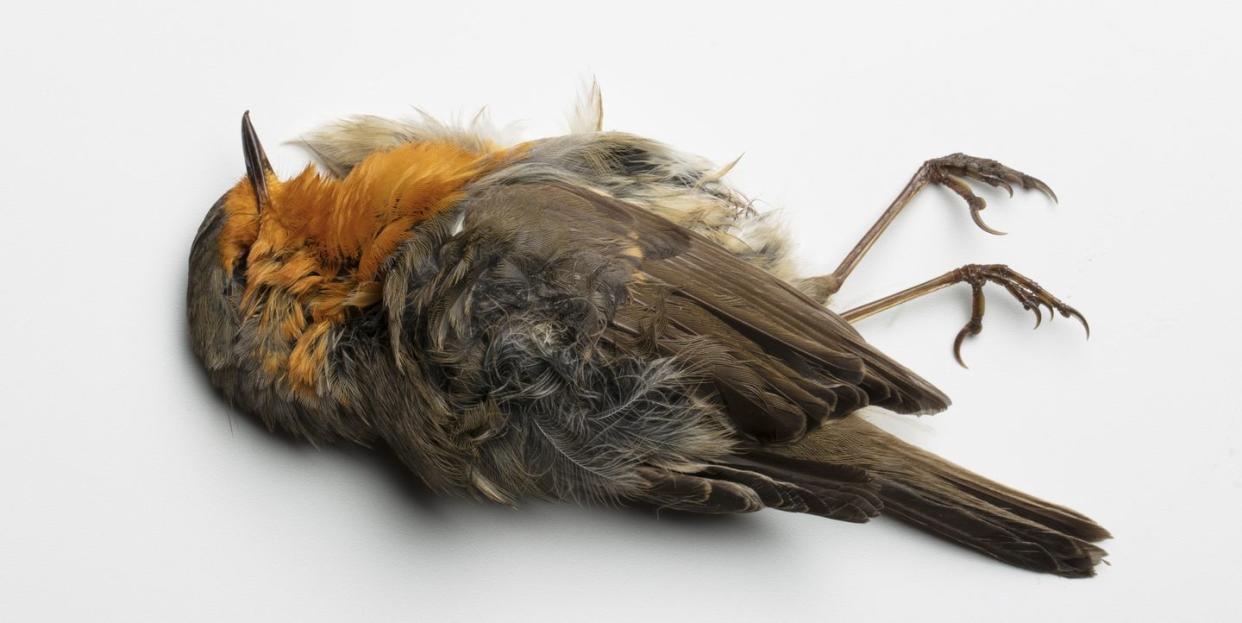Scientists Turned Dead Birds Into Zombie Drones to Spy on Humans

"Hearst Magazines and Yahoo may earn commission or revenue on some items through these links."
Humans have long endeavored to recreate the wonder of avian flight.
Scientists from New Mexico Tech designed a drone using a dead, taxidermied bird in an effort to make a lifelike birdbot.
A realistic bird drone could help scientists monitor wildlife with minimal disruption—or add another spy tool to the CIA’s top secret arsenal.
Scientists have long been interested in the aerodynamic intricacies of avian flight. Leonardo da Vinci’s 15th century flying machines basically looked like giant birds (flapping wings included), and today, robotic birds fly about with names like PigeonBot or BionicSwift. Now, scientists at New Mexico Tech have taken things a step further by transforming taxidermied birds into Frankenstein drones—and the results are pretty convincing.
“Instead of using artificial materials for building drones, we can use the dead birds and re-engineer them [as drones],” New Mexico Tech professor Mostafa Hassanalian tells New Scientist.
Although using a dead bird brings about its own, messy challenges, it has the advantage of avoiding the need to design a bird wing, which is notoriously difficult. It also helps the drone pass as a real bird thanks to the fact that it’s adorned with real bird feathers. The results of this robo-bird test were published online in January.
Hassanalian has published more than a dozen papers analyzing drone flight and baking the biology of avian flight into drone technology. For example, in February 2020, Hassanalian researched how biomimicking a bird flock’s migratory patterns could make unmanned aerial vehicles more efficient.
The goal of the study published in January was to analyze the aerodynamics of a flapping wing drone and discern ways to make the drone more life-like.
“By using 3D flapping and aerodynamic simulators, limits of aerodynamic flapping characteristics could be set for the drone for a specific set of wings,” the paper reads. “This allowed the implementation of flapping mechanisms and testing of the aerodynamics of the flapping wing drone.”
A lifelike robo-bird zombie could have some serious, real-world applications. The most obvious (and altruistic) is as a method for observing wildlife while limiting disruption to the natural environment. Drones are known to be stressful for wildlife and experts and documentarians have tried to develop guidelines on when and how to use them. PBS even used a drone disguised as a hummingbird so the camera wouldn’t “seem like a threat.”
While a realistic bird drone could be great for keeping an eye on reclusive wildlife, it could also turn its gaze on humans as a spy tool. The CIA designed a nuclear-powered bird drone during the Cold War to spy on the Soviet Union and a real-life bird drone could fulfill a similar function.
Hassanalian admits that the bird needs a bit more work before it’s ready for the spy business. Some improved articulation on the wings would make the drone more natural and flexible. The addition of helical gears would also make it quieter, while adding legs could let the drone perch and conserve battery life (luckily, this robotic perch platform is already under development).
It seems like humanity’s 500-year-old obsession with recreating avian flight is alive and well—even if it is a bit creepy.
You Might Also Like


